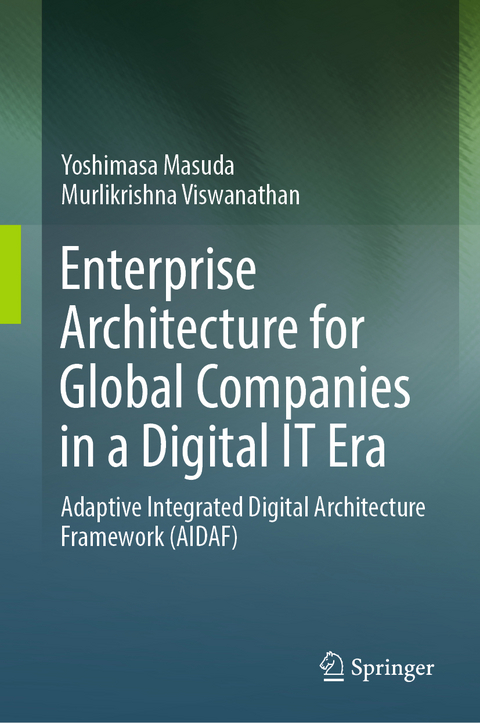
Enterprise Architecture for Global Companies in a Digital IT Era
Springer Verlag, Singapore
978-981-13-1082-9 (ISBN)
The book is divided into three main parts, the first of which (Chapters 1–2) addresses the background and motivation for AIDAF aligned with digital IT strategies. The second part (Chapter 3) provides an overview of strategic enterprise architecture (EA) frameworks for digital IT, elaborates on the essential elements of EA frameworks in the digital IT era, and advocates using AIDAF, models for architecture assessment/risk management, knowledge management on digital platforms. In turn, the third part (Chapters 4–7) demonstrates the application and benefits of AIDAF and relatedmodels, as shown in three case studies.
“I found this book to be a very nice contribution to the EA community of practice. I can recommend this book as a textbook for digital IT strategists/practitioners, EA practitioners, students in universities and graduate schools.” (From the Foreword by Scott A. Bernard)
“In this new age of the digital information society, it is necessary to advocate a new EA framework. This book provides state-of-the art knowledge and practices about EA frameworks beneficial for IT practitioners, IT strategists, CIO, IT architects, and even students. It serves as an introductory textbook for all who drive the information society in this era.”(From the Foreword by Jun Murai)
Yoshimasa Masuda has 14 years of experience in enterprise architecture covering technology, application and security in many industries. He received his PhD in system design and management from Keio University. After completing a BS degree in science and engineering at Keio University, he led many global projects at IBM Japan and engaged in international assignments (Turkey, China). After joining a global pharmaceutical company, he started the global enterprise architecture. He completed his executive education (MoT) at MIT in 2011, and subsequently joined Carnegie Mellon University Australia in an exchange program in 2017 and as a visiting researcher in 2018. His research interests include enterprise architecture, digital IT, digital healthcare, and IT management. Murli Viswanathan has been with Carnegie Mellon University Australia since 2007. As an associate professor, he lectures and manages projects in business intelligence/analytics, machine learning, enterprise architecture, JAVA, and information systems for managers. After receiving his PhD in computer science from Monash University, he was a distinguished visiting professor at Ministry for Information & Communication in South Korea and an assistant professor of computer science at University of Melbourne. He is a senior member of the Australian Computer Society (ACS) and Accenture subject matter expert for analytics. His primary research interests include machine learning for AI, ubiquitous healthcare, enterprise architecture and philosophy of mind.
1. Introduction.- 2. Direction of Digital IT and Enterprise Architecture.- 3. Strategic Architecture Framework aligned with IT strategy promoting Cloud/Mobile IT/Digital IT.- 4. Evaluation for EA framework implementation method.- 5.Evaluation of Architecture Board Review process with Knowledge Management.- 6.Evaluation for Risk Management approach for Digital Transformation.- 7.Overall evaluation and Perspectives.- 8.Conclusion.- 9.Future Direction – Open Healthcare Platform 2030 and IoT Healthcare platform.
| Erscheinungsdatum | 08.02.2019 |
|---|---|
| Zusatzinfo | 41 Illustrations, color; 34 Illustrations, black and white; XX, 158 p. 75 illus., 41 illus. in color. |
| Verlagsort | Singapore |
| Sprache | englisch |
| Maße | 155 x 235 mm |
| Themenwelt | Mathematik / Informatik ► Informatik ► Datenbanken |
| Mathematik / Informatik ► Informatik ► Web / Internet | |
| Mathematik / Informatik ► Mathematik ► Finanz- / Wirtschaftsmathematik | |
| Wirtschaft ► Betriebswirtschaft / Management ► Marketing / Vertrieb | |
| ISBN-10 | 981-13-1082-3 / 9811310823 |
| ISBN-13 | 978-981-13-1082-9 / 9789811310829 |
| Zustand | Neuware |
| Haben Sie eine Frage zum Produkt? |
aus dem Bereich


